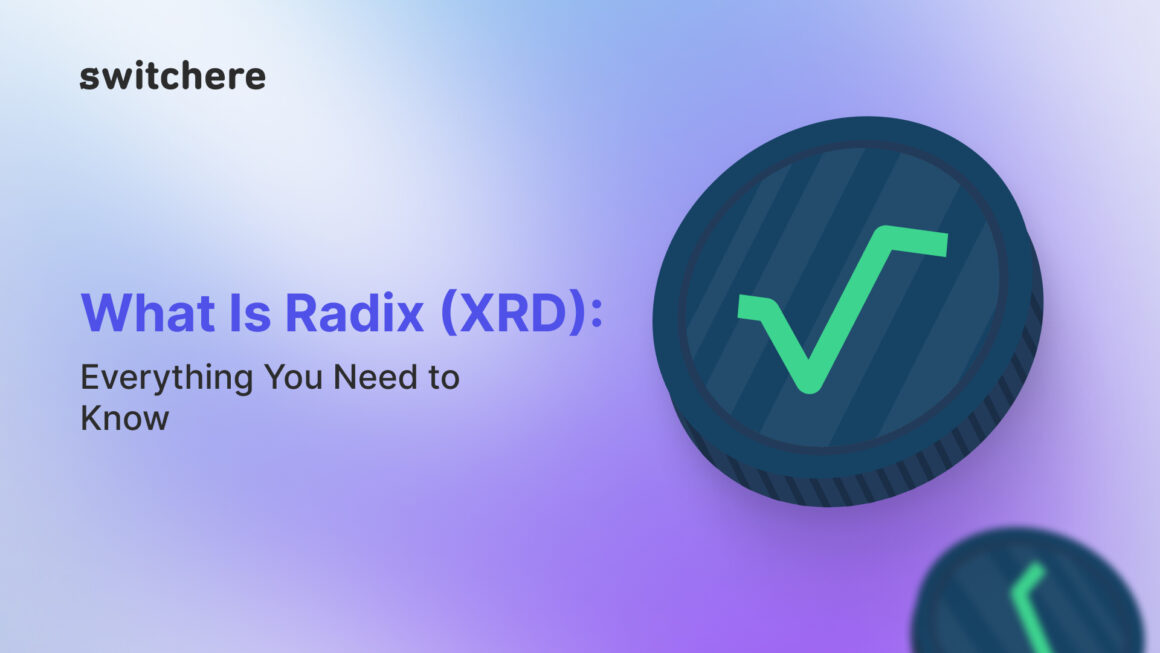Radix (XRD) emerges as a potential game-changer in the fintech industry. As the world becomes increasingly digitized and interconnected, the need for efficient, scalable, and secure decentralized systems has become extremely important. Radix is eager to address these challenges by offering characteristics that redefine the possibilities of DeFi and beyond.
What Is Radix (XRD)?
At its core, Radix is a third-generation layer-1 smart contract DLT platform designed to facilitate the creation and deployment of dApps and services. The RADIX digital currency (it has an XRD ticker) is the native token of the eponymous Radix Public Network, launched back in 2021.
One should distinguish between the RADIX (XRD) and E-RADIX tokens (eXRD). eXRD is the wrapped ERC-20 representation of XRD on the ETH blockchain, and it can be easily exchanged at the 1:1 ratio for XRD via the majority of online cryptocurrency exchange platforms.
Primarily, XRD is meant to protect the Radix network via staking, access DeFi, initiate smart contracts, participate in governance decisions, and pay for transactions. In essence, XRD tokens can be utilized as crypto collateral in P2P lending.
Market Capitalization
At the date of writing, XRD is ranked 213th in the CoinMarketCap.com rating of cryptocurrencies, and it is valued at $0.05 per 1 XRD. The total XRD market capitalization is worth almost $540 million, whereas the current circulating supply has exceeded the 10 billion threshold. The XRD token is currently traded slightly lower by contrast with its ATH indicator ($0.65 per 1 XRD) and will likely be prone to its value upsurge when the crypto market sentiment shifts.
Is XRD Mineable?
The XRD token runs on a Delegated PoS consensus algorithm; thus, it can not be mined but only staked. Crypto adepts can earn rewards from XRD staking.
Key Features of XRD
Network Scalability
One of the tantalizing challenges faced by traditional DLT is scalability. As more users join and use the network, the transaction throughput often decreases, thus causing slow confirmation times and increased fees. Radix addresses this by utilizing a sharded architecture, where TXs are processed through a variety of shards or smaller chains. This feature significantly boosts the platform’s scalability.
Delegated PoS and Cerberus Consensus Layer
XRD token holders can take part in XRD TX validation by distributing their duties to node operators. Resultantly, the latter share their XRD rewards from TX validation.
At the core of Radix’s innovation, one can find the Cerberus Protocol, which features various technologies to optimize performance, security, and user experience. Radix has utilized an eco-friendly Delegated PoS structure via the Cerberus consensus to produce high throughput indices, prompting DeFi dApps to experience quicker execution time.
The RADIX programmers offer unlimited shards, which in turn leads to endless scalability of the XRD network.
Major Use Cases of XRD Tokens
XRD is applicable in the following:
- TX commissions —DeFi dApps pay in XRD to function on the Radix protocol.
- Staking — XRD staking guarantees that node operators are properly motivated to work as planned, therefore eliminating network breaches or spamming.
- Other functions encompass value transfer facilitation (paying for goods and services, exchange between other tokens) as well.
Final Thoughts
The Radix token positions itself as a testament to the ongoing innovation in the blockchain and crypto space. With its revolutionary Cerberus Protocol, scalability solutions, and developer-friendly environment, XRD has the potential to reshape the landscape of decentralized finance, supply chain management, gaming, and much more.
And you have a great option to buy XRD fast, easily, and securely at Switchere — no cumbersome verification or added fees. Enter the DeFi world in a convincing fashion with XRD tokens in your financial portfolio.

Leave a Reply